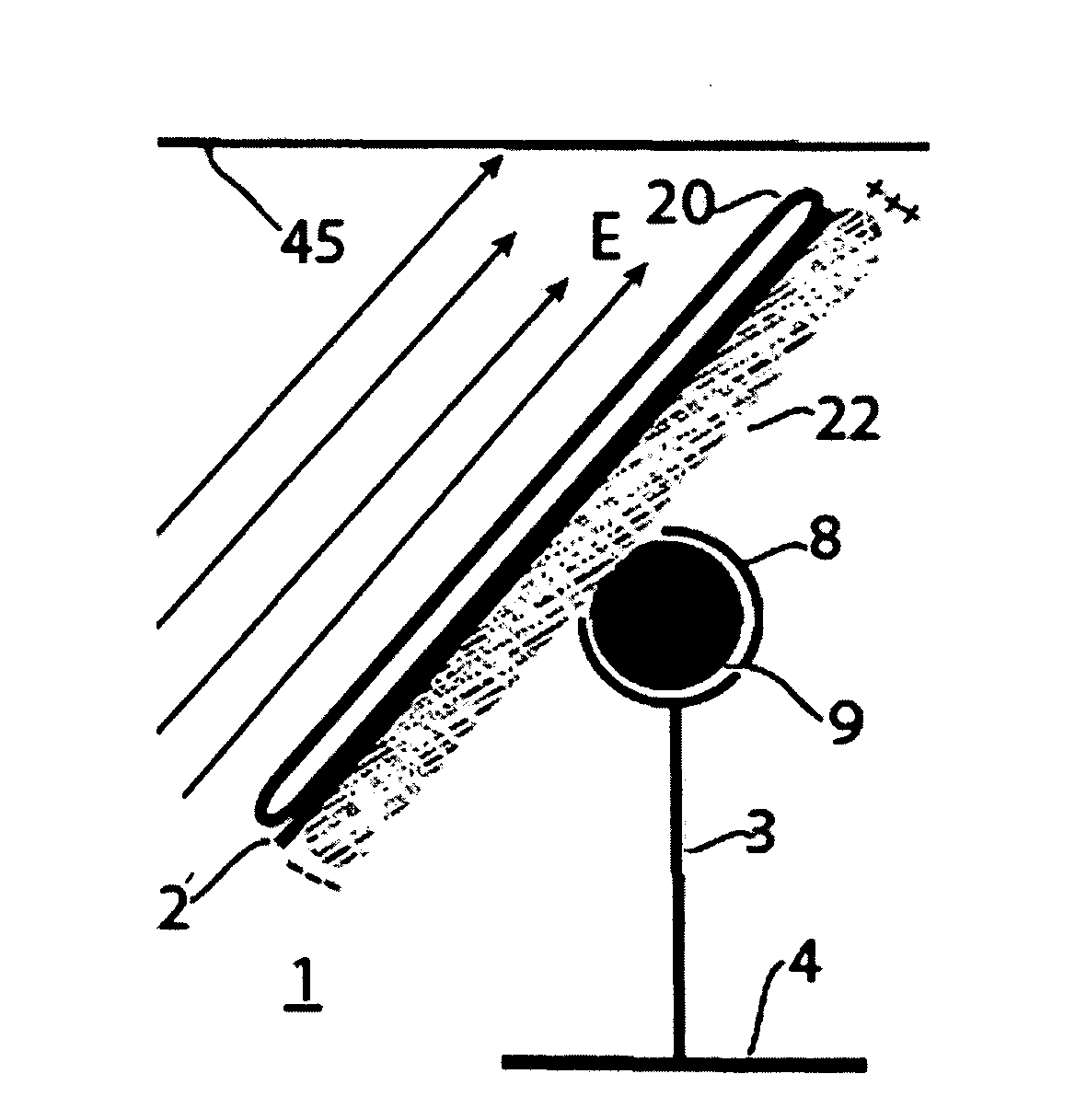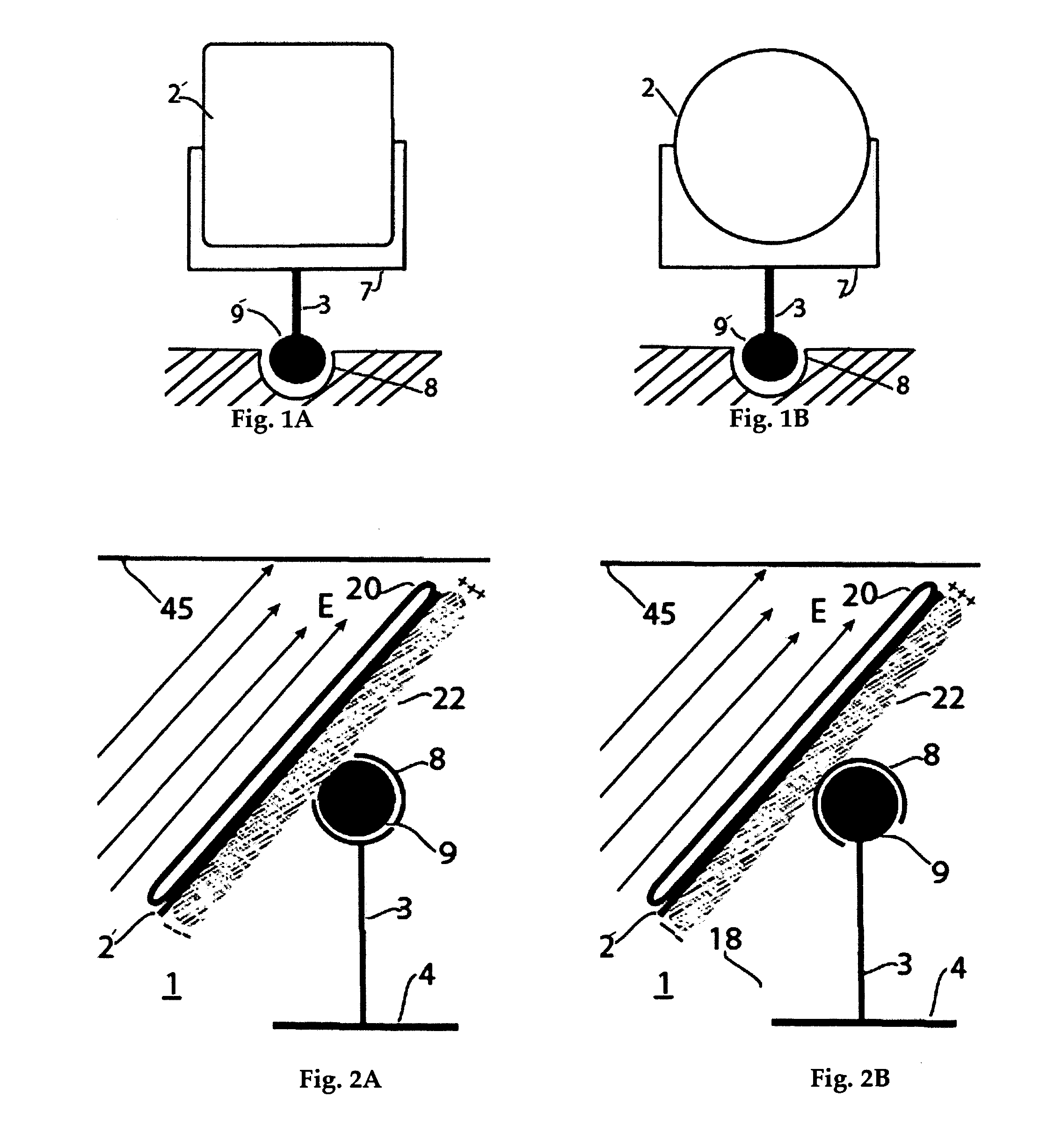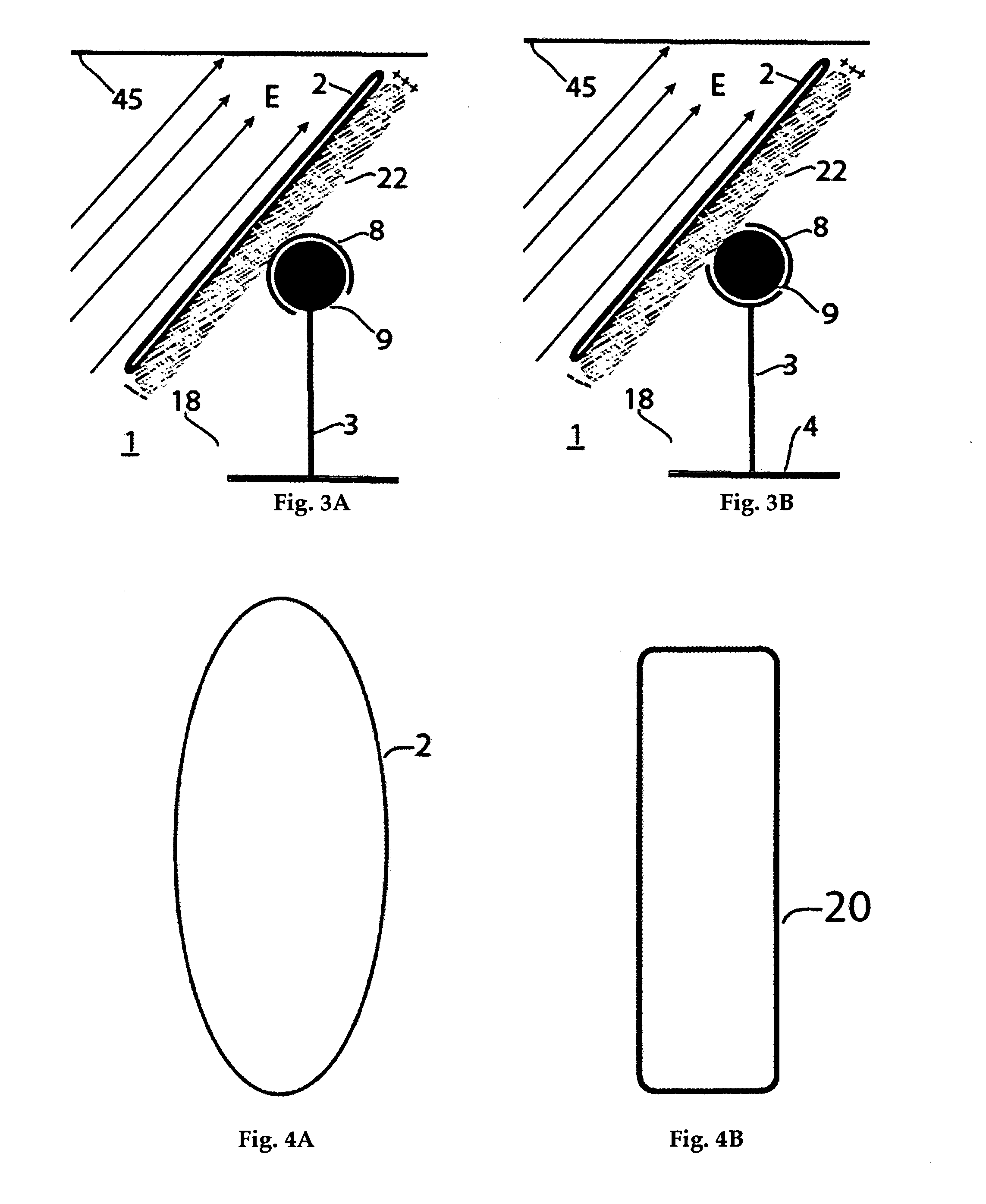Fresnel solar concentrator array with centered universal pivots
a solar energy concentrator and universal pivot technology, applied in the field of universal centered pivot arrays, can solve the problems of no prior art found, and achieve the effects of reducing labor intensity, reducing labor intensity, and reducing labor intensity
- Summary
- Abstract
- Description
- Claims
- Application Information
AI Technical Summary
Benefits of technology
Problems solved by technology
Method used
Image
Examples
Embodiment Construction
[0082]As is described here in detail, the objectives of the instant invention may be accomplished by any of a number of ways separately or in combination, as taught by the instant invention. A tracking solar concentrator has been developed in which the orientation of individual optical elements (lenses) is accomplished by electric dipole interaction between the electric field of a grid and an induced dipole, and / or an electret dipole, to align them consecutively or concurrently without the need for expensive, bulky, and heavy motors. Thus the improved solar concentrator of the instant invention can be less expensive, more reliable, and lighter in weight than conventional solar concentrators.
[0083]FIG. 1A is a front cross-sectional view of a square mini-mirror 2′ supported by gimbals 7, attached to a stem 3 mounted on a pivot 9′ that is supported by a bearing 8. The pivot 9′ is a ball so that the angle of the stem 3 can be adjusted to be vertical when the base is inclined with respec...
PUM
 Login to View More
Login to View More Abstract
Description
Claims
Application Information
 Login to View More
Login to View More - R&D
- Intellectual Property
- Life Sciences
- Materials
- Tech Scout
- Unparalleled Data Quality
- Higher Quality Content
- 60% Fewer Hallucinations
Browse by: Latest US Patents, China's latest patents, Technical Efficacy Thesaurus, Application Domain, Technology Topic, Popular Technical Reports.
© 2025 PatSnap. All rights reserved.Legal|Privacy policy|Modern Slavery Act Transparency Statement|Sitemap|About US| Contact US: help@patsnap.com



